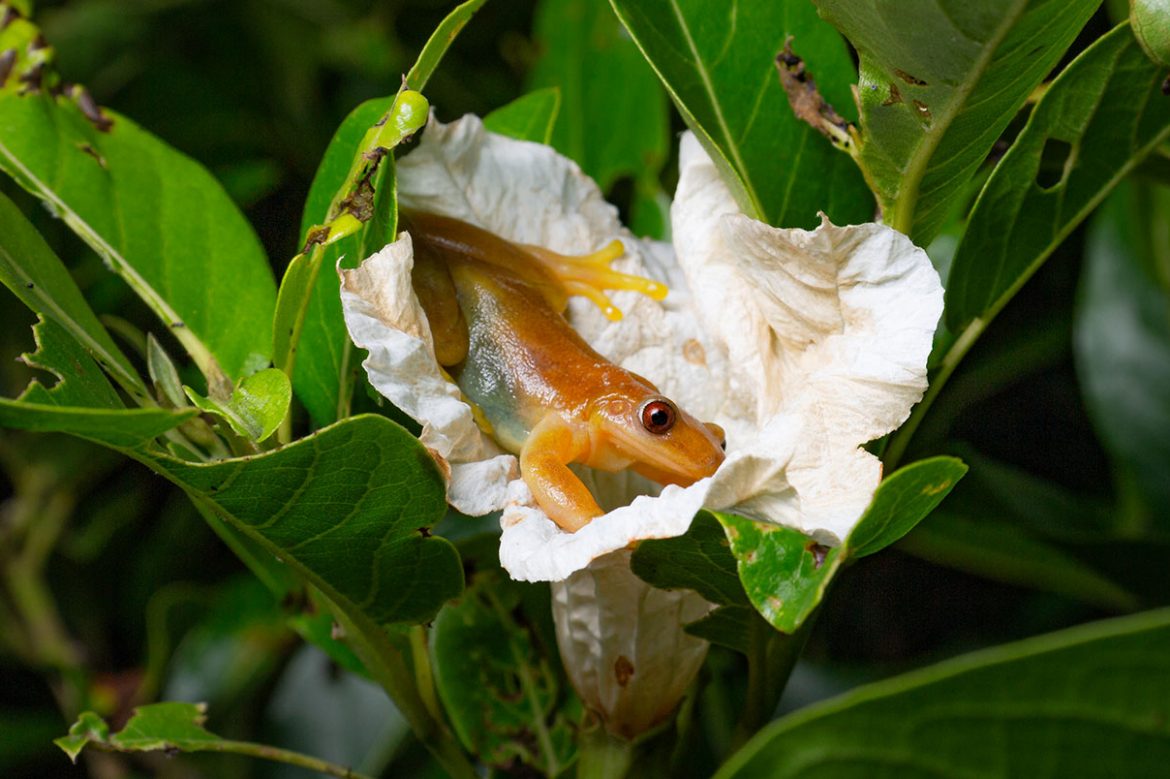
An Amphibian Pollinator
When we hear the word “pollinator” we immediately think of bees. In fact, almost everyone knows the words allegedly said by Albert Einstein “Without bees, mankind would only survive on Earth for four years.” However, bees are not the only pollinators. Flies, beetles, birds and even some mammals can play a role in the pollination of flowers. To truly qualify as a pollinator, it is necessary to identify the pollinating the activities and to assess how quantitatively effective they are in the reproduction of plants. In other words, is a plant able to reproduce without its pollinator and/or how successful is it at doing so?
Recently, a brand new discovery was made in this plant-animal relationship. The tree frog Xenohyla truncata, which lives in the tropical forests and gardens of Brazil, may be the world’s first known amphibian pollinator. This orange, small, sweet little fellow was seen rolling around in the flowers of Cordia taguahyensis, also known as the milk fruit tree, in search of nectar, and then walking away from the scene with pollen glued on its back.
During previous studies, X. truncata was found to have fruit remains in its stomach, making it one of the very few amphibians that feeds on fruit (amphibians usually prey on invertebrates). It was also previously known to spread the seeds of the fruits it feeds on. Flower nectar, which is high in calories, can be an attractive source of energy, especially for female frogs in the process of producing eggs.
Although the frog has been photographed interacting with flowers before, this is the first time scientists have seen this interaction live. Of course, it’s too early to call it a true pollinator, but it’s possible that it travels from flower to flower with pollen on its moist back. What role it plays in the pollination of C. taguahyensis needs to be studied, as it is important to see if the pollen attached to the frog’s back is damaged during transport or if it visits enough flowers to have a significant effect on pollination.
X. truncata, like many of its relatives, is an endangered species. The possibility that it could be the world’s first and perhaps only amphibian pollinator excites biologists and may open the door to conservation measures.
REFERENCES
- 1. https://www.scientificamerican.com/article/this-frog-may-be-the-first-amphibian-known-to-pollinate-flowers/
- 2. https://www.iflscience.com/never-before-seen-frog-behavior-suggests-they-could-be-plant-pollinators-68802
